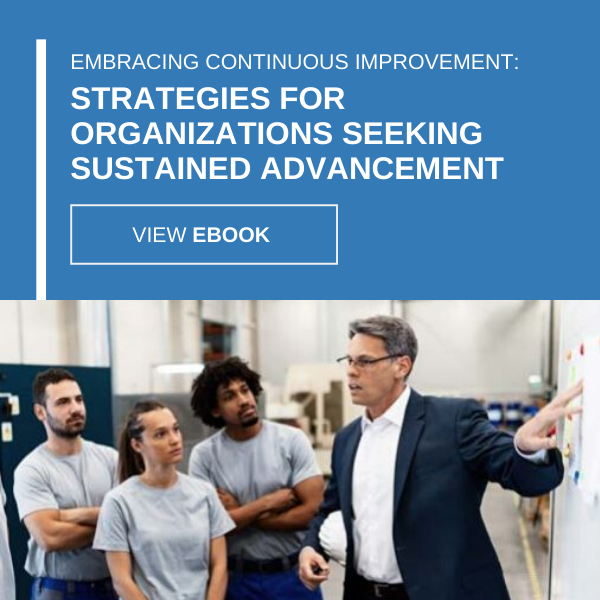
Stop the Firefighting Mentality with an Effective Management Operating System
Does it seem like you’re always putting out fires? Not in the literal sense, of course. We’re talking about operations problems and snafus that seem to pop up at the most inconvenient times. Machines break down. Workers call in sick. Human errors can result in costly fixes. Unforeseen backups or bottlenecks slowing things down. Too much inventory. Not enough inventory. Some days, it can seem like you’re in a constant state of troubleshooting. The problem with that is, it’s hard to move forward into tomorrow when you’re consumed with putting out the fires of today.
Sound familiar? You’re not alone. At USC Consulting Group, we hear it a lot from the clients we partner with to increase efficiency and streamline operations at their facilities. Over the years, we’ve learned that the best course of action to break the cycle of constantly putting out fires is to get ahead of those problems before they become “fires.” Easier said than done, right? Actually, no. The way to do it is to implement an effective Management Operating System (MOS).
MOS 101
What is a Management Operating System, or MOS? Without using industry jargon, a MOS is simply a structured approach to operations. It’s intentional, forward-looking and at times anticipatory, in that it can help spot trouble before it spots you.
A good MOS is a set of tools, processes and frameworks that guide the operations of your business, namely the way employees work. It fosters continuous improvement to address issues as they occur. Or, ideally, before they occur.
Because many of the “fires” you’re stamping out every day can range from production shortfalls to problems related to worker safety, companies that use production lines or have other types of hazardous workplace environments commonly employ management operating systems.
Your MOS should be able to spot inefficiencies in an operating system before they become major problems. This ensures that adjustments can be made so operations are not adversely affected. An MOS should also use real-time feedback so an organization can safely direct operations, funding and other resources to maximize return on investment.
The best management operating systems center around four main components:
- Processes
- Systems
- Roles
- Structures
In other words, it maps out how the job gets done, in what way and by whom.
Let’s look at that in a little more detail.
When designing processes, businesses must be sure that they’re safe, secure and clear for employees to understand and tools are used to support operations — and never in ways that are not dictated by the overall structure. This means users should not use tools in inappropriate ways, especially those that could simply automate their inefficient methods. One process change we always recommend is preventative maintenance. Taking a little downtime today to service your machines can save major work stoppages tomorrow.
An effective MOS uses well-designed systems that help employees and the company as a whole achieve goals, which means they should run smoothly and enhance and even boost established efficiency.
Roles within an MOS should adhere to clearly defined job descriptions that require certain skill sets, and when combined with a business’ processes and systems can best utilize talents. The skills gap has only complicated the matter, but that’s fodder for another blog.
The best-run management operating systems always establish a business-wide structure upon which the different roles within the company interact. This is usually done last because it ensures that the processes do not dictate the entire established structure and cause further issues.
Read more about it in our blog, “How Can a Management Operating System Help Your Organization?”
Benefits of using a good MOS
Putting a carefully planned management operating system in place, one that is unique to your organization and its challenges and strengths, can result in a boatload of positive benefits. According to CEO Magazine, an MOS allows for an organization to “better control the flow of work and production, driving higher outcomes in customer service, quality and cost.”
At a minimum, these systems make use of tools that allow organizations to create plans for future work in certain operations, carry out that work, and then measure the work performance data to suggest future improvements that could be needed.
At maximum? Your company will perform with operational excellence, humming along at capacity, anticipating hiccups before they become problems, planning for growth or even downturns so you won’t be taken by surprise and generally making your life easier and your bottom line stronger.
Other ways an MOS can benefit you and your company:
- Cost savings
- Waste reduction
- Increased product quality
- Identification of workflow gaps
- Find ways to improve efficiency
- Get a handle on any compliance issues or regulations
- Elimination of impediments to your workflow
- Inventory wrangling (so you don’t have too much or too little despite supply chain bottlenecks)
A word about technology. Sure, you can automate your management operating system. Many companies do. But in our opinion, it can’t match good, old-fashioned brainpower, experience garnered through years on the line, common sense of longtime employees and forward-thinking ideas.
Ready to stop the firefighting mentality and talk about it? Give us a call or email us at info@usccg.com. We’ll listen first and then collaborate with you on a path toward operational excellence. It’s what we do.






